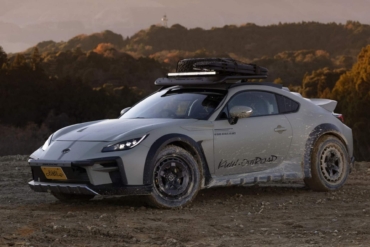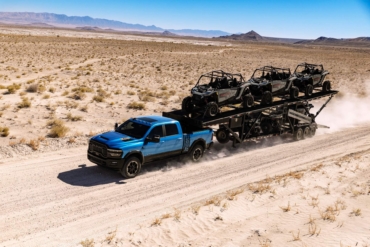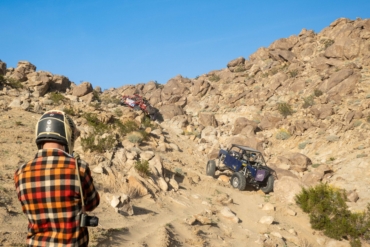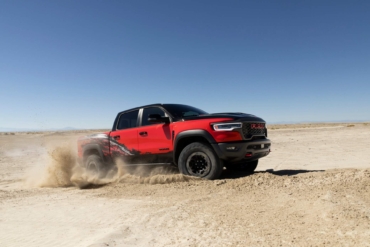If you’re not sure what the difference is between an adventure (ADV) and a dual-sport (DS) motorcycle, you’re in good company. Many media and motorcycle industry insiders confound these two categories frequently, adding to the confusion.
These terms are often used interchangeably, suggesting they’re synonymous. But they’re not, and you can count on GearJunkie to set the record straight.
Before you’re going to put down a deposit at your local dealer, grab a cup of joe, sit back, and let’s look at what differentiates DS from ADV motorcycles. By the time you finish your coffee, you’ll know all the differences and be able to make a choice.

ADV/DS Classification: Ambiguity Galore
Before delving into the details that differentiate DS from ADV motorcycles, note that there’s no official governing body in charge of motorcycle taxonomy.
Without a clear-cut classification, there’s ample scope for interpretation and creative use for marketing purposes. But clarifying the nomenclature will help to avoid this lexical ambiguity and the wrong choice of bike.

To cash in on the popular ADV trend, some manufacturers have opportunistically relabeled existing models to reposition them in the ADV market segment. But applying a marketing ploy doesn’t bestow ADV prowess upon a particular model.
Kawasaki repositioned its existing Versys-X 300 street bike as an ADV model in an attempt to revive its sales.

Kawasaki also repositioned its longest-running DS model (since 1987), the KLR 650, as an ADV motorcycle.
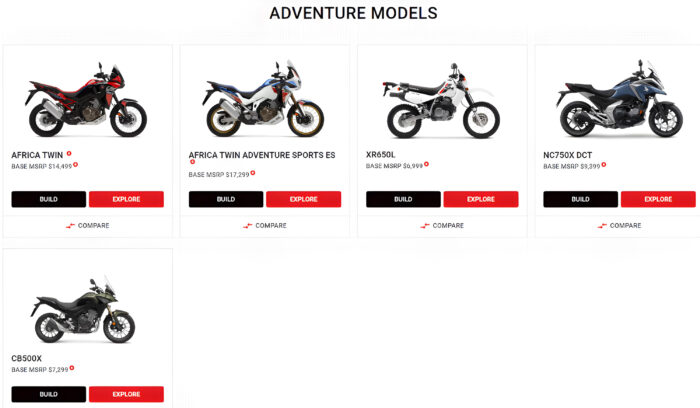
Honda straddle-positioned its perennial DS (unchanged since 1992), the XR650L, in the ADV and DS categories. It also repositioned its CB500X and NC750X DCT to the ADV category. It’s a stretch of the imagination to classify these two street bikes with cast wheels and low ground clearance as ADV motorcycles.
ADV/DS: Back to the Roots
To know which one to choose, we first need to identify the characteristics that separate DS from ADV motorcycles.
Although both categories overlap each other in terms of intended on/off-road use, they’re not equally effective on the street and dirt. Their sweet spot doesn’t coincide on the on/off-road spectrum.
To discern the fundamental difference between DS and ADV bikes, we have to look at their origin. They don’t stem from the same roots, and this affects their disposition.
Dual-Sport Motorcycles: Rooted in the Dirt

As direct descendants of dirt bikes, the off-road DNA is ingrained in the genetic makeup of DS motorcycles. Having adopted good road manners, but with a chassis and engine configuration borrowed from enduro/motocross (MX) bikes, they’re still rooted in the dirt.
This explains why a DS performs much better in the dirt than an ADV bike.
Adventure Motorcycles: Rooted in the Pavement

In contrast, ADV motorcycles are rooted (in the cracks) in the pavement. They inherited their chassis and engine configuration from their tarmac-dwelling ancestors.
ADV motorcycles branched off from street bikes, just like their older cousins, the Scramblers.
Their inherited street DNA may have been genetically modified for off-road duty, but their congenital road bias remains. ADV bikes are therefore more stable and handle better on the pavement than DS, especially at higher speeds.
ADV Motos Versus Dual-Sport Motos: What’s Different?
Here’s a summary of the main features differentiating DS from ADV motorcycles, followed by an explanation. We start with the easily discernible differences and continue with the less-conspicuous contrasts.
Summary of ADV/DS Differences:

Explanation of ADV/DS Differences

Size/Bulk
The most conspicuous difference is the size or bulk. Compared to a DS, an ADV motorcycle is massive. The windscreen and fairing partly encompass the chassis and engine, magnifying the height and girth. Engine guards, crash bars, and luggage racks with panniers add volume to an ADV bike’s already imposing figure.

In contrast, a DS is much smaller and skinnier. This is thanks to its narrow seat, small tank, compact single-cylinder engine, and slim MX-inspired form and styling. Apart from a few exceptions, a DS doesn’t have a fairing, windscreen, or expansive body parts that can easily be damaged in a tip-over or crash.
Weight

Bulk translates into weight; no surprises there. The average ADV motorcycle weighs 500 pounds while a DS registers around 300 pounds on the scale. The 200-pound difference may not bother you much on the pavement. Off-road is a different story when you find yourself wrestling your bike through deep mud, loose gravel, and soft sand.

What if you drop the bike or get stuck in the mud while you’re riding solo along a remote track? Lifting a DS like the Honda CRF300L (309 pounds) is doable. But what about lifting a hefty ADV bike with luggage weighing 500+ pounds?
Windscreen

Most ADV bikes come with an (adjustable) windscreen. It deflects the air over your helmet, preventing it from buffeting in the turbulence. It helps reduce neck muscle fatigue and wind noise, making riding more enjoyable.

Windscreens on DS are nonexistent or minimalistic, as riding on asphalt at high speed for hours on end was not part of the design brief. The highway is just not the natural habitat of a DS.

Some DS models have been styled after Dakar rally bikes and come stock with a windscreen that offers adequate wind protection.

The Kawasaki KLR 650 also comes stock with a windscreen and a long-range gas tank, making it a popular choice for round-the-world (RTW) travel.
Fairing & Body Parts

Most ADV motorcycles have a fairing to shield the rider, improve aerodynamics, and beautify the bike. Made of rigid thermoplastic (ABS), an ADV fairing is prone to crack or scratch when dropped and is expensive to replace. It also adds bulk and weight.

In contrast, DS bikes don’t have fairings. Their enduro/MX-style body parts are made from a durable, flexible thermoplastic (HDPE) that can withstand a lot of abuse before breaking.
Front Fender
In line with its street heritage, an ADV motorcycle has a wheel-hugging, narrowly shaped front fender mounted between the lower fork sliders. The fender moves up and down in unison with the front wheel and lower fork legs, adding to the unsprung mass.
The advantage of this shape and mounting position is that the fender doesn’t catch the wind at high speed, adversely affecting the steering or stability.
In contrast, a DS front fender is bolted to the underside of the front fork’s lower triple clamp and is thus part of the suspended or sprung mass.
Like all dirt bikes, a DS front fender is mounted high to offer ample clearance to prevent the wheel from getting stuck due to mud building up between the fender and the tire. This is a commonly occurring problem with ADV motorcycles riding muddy trails.
The disadvantage of this wide, long, high fender is that it acts as a giant wind catcher. Because of the high clearance, the front fender needs to be wide and long (to the front) to catch the mud flinging off the front tire.
Protection

To avoid a premature end to your trip and hefty repair bills, it’s a good idea to mount crash bars and a skid plate to protect the fairing and engine from getting damaged.
To protect its vast gas tank and exposed cylinder heads, owners of the BMW R 1250 GS Adventure sometimes tend to go overboard with an all-encompassing crash bar assembly.

The KTM 1190 Adventure R is also prone to damaging its flanks when dropped, hence the need for protective “scaffolding.”

A DS doesn’t need much protection, as its radiator shrouds and battery/air box side covers are made of tough, flexible thermoplastic (HDPE).
For most DS models, a pair of handguards and a skid plate will suffice. If your bike’s radiators stick out wide, you might want to install a pair of radiator guards under the plastic shrouds.
Rear Subframe & Luggage Racks

If you plan to travel, you’ll need a bike that can carry luggage and a passenger if you’re riding two-up. This is where an ADV motorcycle excels, as its frame is designed for riding two-up with luggage. It’s sturdy enough to withstand the abuse inflicted by the vibrations and shocks caused by off-pavement riding.

To carry luggage, ADV motorcycles have top and side cases mounted on racks that are bolted to the subframe. It’s crucial to avoid overloading the cases as excessive weight may affect the bike’s handling to the point of losing control, i.e., the dreaded speed wobble.
Apart from the safety aspect, riding off road with an excessive load can also cause damage. As the bike bounces up and down, the luggage racks flex under the weight of the cases. The repeated stress caused by the cyclical loading and unloading of the flexing racks can induce metal fatigue and ultimately stress fractures.

The current trend for ADV-style travel is to opt for soft bags, as they’re lighter and more crash-resilient than hard cases, which tend to get whacked out of shape in a fall.
Most soft bags for ADV motorcycles are mounted on pannier racks, similar to hard cases.

But if you like to keep it tight and light for off-road/camping trips, then a rackless soft bag system is a better option, especially for DS bikes. Without racks, the bags are closer to the motorcycle’s center of mass, improving handling.

A DS rear subframe can tolerate a passenger on the pillion but not much more. As it’s not designed to carry any luggage, it rarely comes with an OEM rear rack. Or if it does, it’s a minimalistic one with a warning sticker that the luggage should not exceed a ludicrously low maximum load, such as 6.6 pounds.
If you plan to use your DS for ADV travel, you’d better brace the subframe or opt for rackless soft luggage. For more information, check out our hard cases versus soft bags guide.
Gas Tank

If riding long distances across remote wilderness is your thing, then a large-capacity gas tank is a must. With a capacity of 6 to 8 gallons, the average ADV gas tank offers a generous range of 200+ miles.

A stock DS gas tank simply won’t do, as it averages only 2 to 3.8 gallons for the 250/300cc and 400/650cc classes. This limits range to less than 100 to 150 miles, respectively.

Luckily, you can extend the range with an aftermarket long-range gas tank available for most DS models.
Wheels
DS wheels follow the standard for dirt bikes: 21-inch front and 18-inch rear wheels. Apart from a few exceptions with 17-inch rear wheels (such as the Kawasaki KLR650 and Suzuki DR650).

Some off-road-oriented, mid-size ADV bikes also have 21/18-inch F/R wheels (such as the KTM 890 Adventure and Yamaha Ténéré 700), but most have 19/17-inch F/R wheels. A 19-inch front wheel makes turning into corners easier at highway speeds.
The larger the wheel diameter, the smaller the strike angle (or angle of attack) when it hits an obstacle, and the easier it rolls over irregularities in the road. A 21-inch front wheel enhances stability by smoothing out the bumps, but the tradeoff is slower steering into corners at higher speeds.
Tires

The difference in OEM tires reflects the orientation of DS versus ADV motorcycles. Tire manufacturers rate ADV/DS tires on an on/off-road scale, indicating their intended use with a street/dirt ratio. For example, a 60/40 tire is designed for 60% on-road and 40% off-road use.
While DS tires have knobs to gain traction in the dirt, most stock ADV tires have a smoother tread with 90/10 or 80/20 road-bias rating.
You should opt for more aggressive ADV tires if you ride off road regularly, such as 50/50, or even 30/70 or 20/80 for serious off-road adventures.
Seat
Due to high ground clearance, large wheels, and long-suspension travel required for off-road riding, DS and ADV motorcycles have tall seats. But that’s all they have in common.

DS seats are flat, narrow, and hard compared to the wide, well-padded, ADV saddles. If you plan long hours in the saddle, your butt will appreciate replacing the torturous stock DS seat with a comfortable aftermarket one.
To reduce seat height, you can mount a lowering link for the rear suspension (if available) and/or a lower/thinner aftermarket saddle.
Ground Clearance

ADV motorcycles have ample ground clearance for going off pavement, although less than DS bikes. But, if you intend to tackle rough, rocky, tracks, a sturdy skid plate is a must, regardless of your bike’s ground clearance.
DS vs. ADV Engine

The majority of ADV engines are parallel twins, V-twins, and twin-cylinder boxers, with triples and four-cylinders vying for the remaining market share. Their displacement ranges from 500 to 1,290 cc. To achieve economies of scale, the same engine is shared with various other (street) models.

The parallel-twin engine configuration dominates the mid-size ADV range (500 to 900 cc), while twin-cylinder boxers, V-twins, and triples make up the bulk of the big ADV models (1,000 to 1,290 cc).

Almost every DS is powered by a liquid-cooled, fuel-injected, four-stroke (4T), single-cylinder engine with a wide-ratio gearbox and a displacement ranging from 250 to 690 cc.

A few old-school DS with air-cooled, carbureted, 4T engines are still in production (without any changes or updates) because they were grandfathered in under EPA regulations, such as the Yamaha XT250, Honda XR650L, and Suzuki DR650S.
DS Single-Cylinder Engine: Pros

A DS single-cylinder has a punchy character that facilitates riding gnarly tracks at low speed. A twist of the throttle immediately translates into traction thanks to the instantly available torque at low revs. This makes it easy to lift the front wheel over obstacles like rocks, ruts, and branches at low speed.
Thanks to their low-revving character and low weight, thumpers also have good fuel economy.
The simplicity and accessible layout of a single-cylinder make it easy to work on, reducing servicing costs. Anyone with minimal wrenching skills can take care of basic maintenance and lower the cost of ownership.

Since they’re compact and lightweight, single-cylinder engines allow the use of a lighter chassis. A DS is therefore more agile and easier to handle than a heavyweight ADV motorcycle, reducing rider fatigue and the risk of falling.
DS Single-Cylinder Engine: Cons
The downside of a 4T single-cylinder is that there’s only one combustion stroke per four strokes, resulting in excessive vibrations and a pulsating power delivery, hence the nickname “thumper.”
To overcome this flaw, a heavy flywheel and an internal counterbalancing shaft are added. But completely canceling a thumper’s vibes is impossible, making extended highway riding at high rpm less than enjoyable and bad for its lifespan.
ADV Multi-Cylinder Engine: Pros

A multi-cylinder engine runs smoother and quieter and produces more horsepower for the same displacement than a single-cylinder engine. It’s rev-happy and more durable because the rotational forces are better counterbalanced, enabling the engine to spin faster with fewer vibrations.
A multi-cylinder is the engine of choice if fast on-pavement riding for long stretches is part of your plan.
ADV Multi-Cylinder Engine: Cons
Multi-cylinder ADV moto engines are more complex, heavier, and bulkier than their thumper siblings. These attributes make them more difficult to work on, have higher manufacturing and service costs, and be more prone to damage in a crash.
DS & ADV Moto Transmission & Gearing
A DS wide-ratio gearbox (primary transmission) has a lower first and second gear than ADV bikes for riding gnarly, technical trails at a slow pace.
The secondary transmission of a DS is always a chain drive. A variety of different-size front and rear sprockets are available to adjust the gearing to the riding conditions and rider preferences. For example, riding single track in the woods calls for lower gearing. On highways or hard-packed/gravel roads, a higher gearing will lower the revs, improving fuel economy and reducing the engine buzz.
An ADV wide-ratio gearbox has a high sixth gear to bring down the rpm when riding long stretches at high speeds.
An ADV secondary transmission is either a shaft drive or a chain drive. Only the latter’s gearing can be adjusted by changing sprockets.
Electronic Rider Aids

Not many riders possess the skills required to safely use and control a powerful ADV engine’s full potential. ADV motorcycles are therefore equipped with a suite of electronic rider aids that actively enhance safety by controlling the bike’s handling and performance. Using the ride modes menu, riders can select a power band that suits the road conditions and their preference.
These complex electronic control systems use sensors and microprocessors to monitor and manage various dynamic aspects.

High-end ADV motorcycles are equipped with the same advanced systems as the top-of-the-line superbikes: throttle-by-wire, quick shifter, hill start control, lean angle-sensitive cornering ABS, selective ride modes, adaptive cruise control, and electronically adjustable semi-active suspension. They also have dynamic damping control, adaptive ride height, motorcycle stability control, cornering traction control using a six-axis IMU (initial measurement unit), and more.

In stark contrast, DS bikes are devoid of electronic rider aids, apart from a basic ABS. But this is not necessarily a bad thing. It’s very satisfying to extract the most out of a motorcycle using your riding skills instead of relying on rider aids.
You should also consider a DS if you have little or no experience riding off-road. Learning dirt-riding skills is easier on an agile, lightweight, DS than on a heavy, powerful ADV motorcycle. You’re bound to develop better riding skills without relying on electronic rider aids.
Suspension

Both DS and ADV motorcycles have long-travel suspension, with DS suspension being the longest by a few inches.
An entry-level DS (such as a Honda CRF300L) has a basic suspension with no adjustability apart from the rear shock absorber’s spring preload adjustment. It’s undersprung from the factory, but does the job for mild-mannered, recreational riding.
But, if you’re into more vigorous off-road riding or ADV-style traveling, then you’ll realize that the nonadjustable, soft, OEM front fork and rear shock absorber are a pathetic excuse for an off-road suspension.

If you want to drastically improve the handling of your DS, then the aftermarket offers solutions. Any quality suspension allows you to manually adjust the front and rear preload/sag and the (high/low-speed) compression and rebound damping.
The ultimate solution to optimize your DS suspension is to send it off to a professional suspension tuner for a makeover. This may involve replacing the suspension or, the cheaper option, revalving the dampers and installing new springs with the correct spring rate for your weight and riding style. A properly tuned suspension will truly transform the handling of your DS.

With the advent of advanced dynamic electronic suspension control systems, motorcycle suspension has entered the digital era.
The sophisticated electronic control system automatically adjusts the front and rear spring preload to the payload. Via the selected ride mode, it also automatically adjusts in real time the high/low-speed compression and rebound damping to the rider’s preference. Compared to old-school suspension, this cutting-edge digital suspension control technology offers a magic carpet ride.
Conclusion: Is a DS or ADV Motorcycle Right for You?
Now that you’re familiar with the ins and outs of the two categories, you can make the right choice, taking into account your riding style, experience, and aspirations.
If you’re a street rider wanting to start ADV riding, but have little or no off-road experience, you should consider starting with a lightweight DS to build up your confidence and skills off road. Once you’ve gained enough experience, you can upgrade to an ADV motorcycle for longer trips with mixed terrain.
If you’re into riding single-track and you’ll ride to the trailhead via paved roads, then an agile DS with adjustable suspension is the way to go. It’s also a good choice if you enjoy exploring the wilderness with lightweight camping gear strapped to the bike on the condition it has a long-range tank.
With versatility listed at the top of their design brief’s objectives, ADV motorcycles are the motorcycle counterpart of the Swiss Army Knife. If you plan a long trip with roughly an equal mix of pavement and dirt, then an ADV motorcycle is hard to beat.
Load your camping gear into the hard cases or soft bags, turn on your GPS, and off you go. If you’re an experienced rider, exploring the backcountry on a big ADV bike is as good as it gets.
FAQs: Dual-Sport vs. Adventure Motorcycles
A DS can do long trips, as proven by many round-the-world motorcycle travelers. But whether it’s the right choice for you depends on the kind of trip you’re planning. If your trip consists of mostly long distances on pavement, an ADV motorcycle would be a better choice. But fitted with a long-range tank and aftermarket padded seat, a DS is perfectly capable of doing an extended trip if you mostly stay off the freeways.
The Backcountry Discovery Routes (BDR) are specifically created with ADV motorcycles in mind, and they are therefore the best choice. However, if you’re inexperienced in the dirt, you should consider a DS, as the BDR is not the place to learn off-road riding with a fully laden ADV behemoth.
Also, some of the routes are better suited for DS. For example, the sandy desert tracks of the SoCal BDR are quite challenging on an ADV bike and easier to ride on a light and nimble DS.
A DS is an excellent entry-level choice for beginners to develop their skills, as it’s lightweight and agile, making it easy to balance and maneuver. Its single-cylinder engine is beginner-friendly, as it is less powerful and produces manageable torque at low revs.
An ADV motorcycle’s weight, bulk, and power output are intimidating for a beginner, making it less suitable as a learner bike, especially off-road.
Regardless of your choice, it’s imperative you sign up for proper training by a qualified instructor and practice your riding skills before venturing off-road.
The obvious answer would be an ADV motorcycle, as its average seat height is 2 inches lower than that of a DS, respectively, 33 inches versus 35 inches. But it’s not that straightforward, as other factors come into play.
If you’re an inseam-challenged rider, straddling an ADV bike may leave you tiptoeing while you might be able to flatfoot perched on an equally high DS seat. The reason is the difference in seat width, as an ADV saddle is substantially wider than a DS seat, forcing your legs further apart when straddling.
If seat height is a critical factor for you, then saddle width is not the only additional metric to consider. You should also factor in the suspension sag since it affects your straddling height.
To reduce seat height, you can mount a lowering link for the rear suspension (if available) and/or replace the OEM seat with a lower or thinner aftermarket saddle.
When budgeting for your trip, the first question to answer is if you’re going to buy a new or secondhand motorcycle. A new 2023 BMW R 1250 GS Adventure will set you back more than $25,000. The MSRP for a 2023 Kawasaki KLR650 is $6,899 and $6,999 for a 2023 Suzuki DR650.
A secondhand KLR650 or DR650 in good condition and with low mileage can be found between $3,000 and $5,000, depending on age. The difference in purchase price would already cover a substantial part of your travel budget.
Then there’s the budget required for equipping the bike for the trip: long-range tank for a DS, luggage rack, panniers (hard cases or soft bags), crash bars, skid plate, hand guards, auxiliary lights, etc.
A third budgetary consideration is the cost of ownership: insurance, depreciation, cost of service including the price of spare parts (chain and sprockets, brake pads, filters, etc.), and running costs (gas and tires). For example, tires for large-capacity ADV motorcycles are a lot more expensive and don’t last as long as DS tires.
There’s no contest: a single-cylinder DS is considerably cheaper to own and operate than a multi-cylinder ADV motorcycle.




